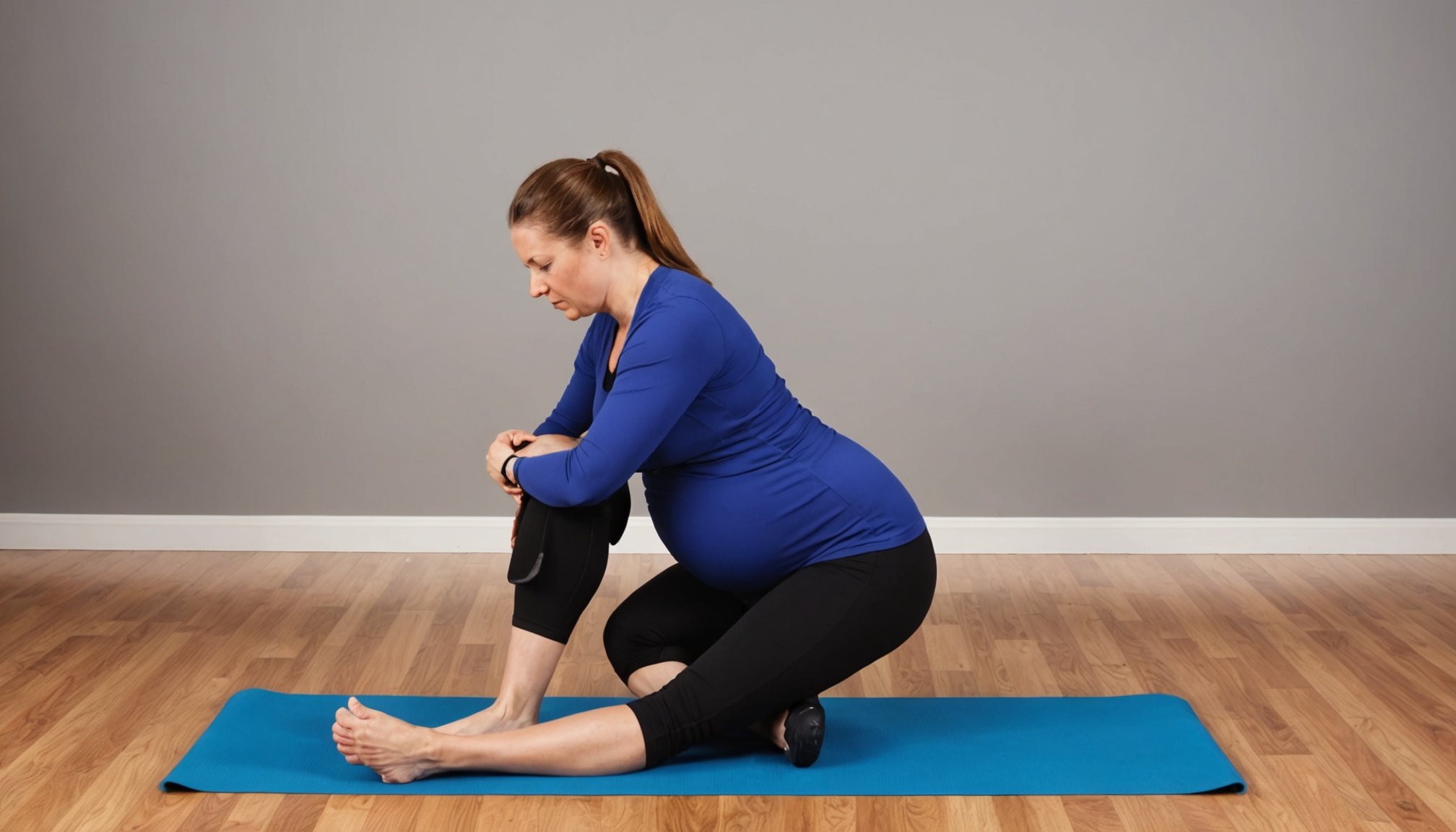Top Core Exercises to Help Pregnant Women Safeguard Against Lower Back Pain
Understanding the Importance of Core Strength During Pregnancy
When you’re pregnant, your body undergoes a multitude of changes, many of which can impact your lower back. The growing uterus, hormonal shifts, and the added weight can all contribute to lower back pain, a common complaint among pregnant women. However, incorporating the right core exercises into your pregnancy routine can make a significant difference in managing and preventing this pain.
Why Core Exercises are Crucial During Pregnancy
Core exercises are not just about strengthening your abdominal muscles; they also play a critical role in stabilizing your body and supporting your lower back. Here are a few reasons why core exercises are essential during pregnancy:
In parallel : Top Tips for Maintaining the Vibrancy of Your Black Jeans Through Every Wash
- Supports the Lower Back: Strong core muscles help in distributing the weight of the growing uterus more evenly, reducing the strain on your lower back[3].
- Improves Posture: Good core strength helps maintain proper posture, which is vital during pregnancy to avoid putting unnecessary stress on your back[3].
- Enhances Pelvic Floor Health: Core exercises often include pelvic floor exercises, which are crucial for preparing the muscles for childbirth and postpartum recovery[2].
- Reduces Risk of Diastasis Recti: Diastasis recti, a condition where the abdominal muscles separate, can be mitigated with appropriate core exercises. This condition is more common during the third trimester and in cases of multiple pregnancies[3].
Best Core Exercises for Pregnant Women
Here are some of the best core exercises that are safe and beneficial during pregnancy:
Pelvic Floor Exercises (Kegel Exercises)
- How to Do It: Contract your pelvic floor muscles as if you are trying to stop the flow of urine. Hold for 5-10 seconds and release. Repeat this process 10-15 times, several times a day.
- Benefits: Strengthens the pelvic floor muscles, which helps in supporting the uterus and bladder. It also aids in postpartum recovery by reducing the risk of incontinence[2].
Plank (Modified for Pregnancy)
- How to Do It: Start in a plank position with your hands shoulder-width apart. Instead of being on your toes, drop to your knees to reduce the strain on your back. Hold this position for 30-60 seconds, rest for 30 seconds, and repeat 3-5 times.
- Benefits: Strengthens the core muscles, including the abdominals and back muscles, which helps in stabilizing the body and reducing lower back pain[4].
Bird Dog
- How to Do It: Start on your hands and knees. Lift your right arm and left leg off the ground, holding them straight. Hold for a few seconds and then lower. Repeat on the other side. Do 10-15 repetitions on each side.
- Benefits: Strengthens the core and back muscles while improving balance and stability[4].
Pelvic Tilt
- How to Do It: Lie on your back with your knees bent and feet flat on the floor. Tilt your pelvis upwards and then back down again, repeating the motion for 10-15 repetitions.
- Benefits: Helps in strengthening the abdominal muscles and improving flexibility in the lower back[3].
Deep Breathing Exercises
- How to Do It: Lie on your back with your knees bent and feet flat on the floor. Place one hand on your belly and the other on your chest. Inhale deeply through your nose, allowing your belly to rise while your chest remains still. Exhale slowly through your mouth, allowing your belly to fall. Repeat several times.
- Benefits: Helps in relaxing the body, reducing stress, and improving core strength through engagement of the transverse abdominis muscle[2].
Detailed List of Exercises
Here is a more detailed list of exercises that you can incorporate into your routine:
Also to read : Your ultimate guide to choosing the ideal eye cream: personalized solutions for your unique skin needs
- Marching: Lie on your back with your knees bent and feet flat on the floor. Lift one foot off the ground, keeping your knee bent at a 90-degree angle. March in place, alternating legs.
- Benefits: Strengthens the abdominal muscles and improves circulation.
- Wall Squats: Stand with your back against a wall and your feet shoulder-width apart. Slowly slide your back down the wall until your thighs are parallel to the ground. Hold for 30 seconds to a minute.
- Benefits: Strengthens the leg muscles and improves posture.
- Swimming: Engage in swimming or water aerobics, which are low-impact exercises that can help strengthen the core without putting excessive strain on the back.
- Benefits: Improves overall body strength, including the core and back muscles, while reducing the risk of lower back pain[1].
Table: Comparing Core Exercises for Pregnancy
| Exercise | How to Do It | Benefits |
|---|---|---|
| Pelvic Floor Exercises | Contract pelvic floor muscles, hold 5-10 seconds, release. Repeat 10-15 times. | Strengthens pelvic floor muscles, aids in postpartum recovery. |
| Modified Plank | Start in plank position on knees, hold 30-60 seconds. | Strengthens core and back muscles, stabilizes the body. |
| Bird Dog | Lift opposite arm and leg off ground, hold a few seconds. Repeat 10-15 times. | Strengthens core and back muscles, improves balance and stability. |
| Pelvic Tilt | Lie on back, tilt pelvis upwards and back down, repeat 10-15 times. | Strengthens abdominal muscles, improves flexibility in lower back. |
| Deep Breathing Exercises | Lie on back, inhale deeply through nose, exhale slowly through mouth. Repeat several times. | Relaxes body, reduces stress, improves core strength. |
| Marching | Lie on back, lift one foot off ground, march in place, alternating legs. | Strengthens abdominal muscles, improves circulation. |
| Wall Squats | Stand with back against wall, slide back down until thighs are parallel to ground. Hold 30 seconds to a minute. | Strengthens leg muscles, improves posture. |
| Swimming | Engage in swimming or water aerobics. | Improves overall body strength, reduces risk of lower back pain. |
Managing Common Pregnancy-Related Pains
During pregnancy, women often experience various types of pain and discomfort. Here are some tips on managing these common issues:
Lower Back Pain
- Causes: Weight gain, hormonal changes, and poor posture.
- Solutions: Engage in core exercises, use a supportive back belt, practice good posture, and avoid heavy lifting[3].
Diastasis Recti
- Causes: Separation of abdominal muscles due to the growing uterus.
- Solutions: Perform core exercises that focus on stabilizing the body, avoid heavy lifting, and engage in deep breathing exercises to strengthen the transverse abdominis muscle[3].
Cramps
- Causes: Metabolic imbalance, often due to a deficiency in magnesium or calcium.
- Solutions: Stretch the affected muscle, contract the opposing muscle, and consider wearing a night splint to stretch the feet. Consult a physiotherapist for a preventive stretching program[3].
Postpartum Recovery and Core Strength
Maintaining core strength during pregnancy is not just beneficial for managing lower back pain but also plays a crucial role in postpartum recovery. Here’s why:
- Faster Recovery: Strong core muscles help in recovering faster from childbirth by providing better support to the body.
- Reduced Risk of Incontinence: Strengthening the pelvic floor muscles during pregnancy reduces the risk of incontinence postpartum[2].
- Improved Posture: Good core strength helps in maintaining proper posture, which is essential for new mothers who often spend a lot of time lifting and carrying their baby.
Practical Tips and Precautions
Before starting any exercise routine during pregnancy, it’s crucial to consult with your healthcare provider. Here are some practical tips and precautions to keep in mind:
- Get Medical Approval: Always get approval from your doctor or midwife before starting or continuing any exercise routine.
- Listen to Your Body: If you experience any pain or discomfort, stop the exercise immediately.
- Stay Hydrated: Drink plenty of water before, during, and after your workouts.
- Avoid High-Impact Activities: Avoid exercises with high impact, such as running or jumping, which can put excessive strain on your back and joints[1].
Incorporating core exercises into your pregnancy routine can significantly help in managing lower back pain and preparing your body for childbirth and postpartum recovery. By understanding the importance of core strength, choosing the right exercises, and taking necessary precautions, you can ensure a healthier and more comfortable pregnancy.
As Émilie Fecteau, a kinésiologue and ostéopathe, advises, “It’s important to adapt your movements during pregnancy to focus more on body stabilization rather than high-impact activities.” By following this advice and the exercises outlined above, you can safeguard against lower back pain and enjoy a healthier pregnancy journey.
Remember, every pregnancy is unique, so it’s essential to tailor your exercise routine to your individual needs and health status. Always consult with your healthcare provider before starting any new exercise program. With the right approach, you can maintain a strong core, reduce lower back pain, and ensure a safe and healthy pregnancy.
Tips for Proper Form and Technique
When it comes to exercise form and technique tips, maintaining the right posture is crucial for ensuring safe workouts. Here are a few essential recommendations:
-
Key Posture Tips: Align your body properly to reduce the risk of injury. Keep your back straight during exercises like squats and lunges. Ensure your knees align with your toes in lower body workouts to prevent strain. Engaging your core not only improves stability but also protects your spine.
-
Listen to Your Body: Understanding and recognising your body’s limits is pivotal. If you feel sharp pain, it’s crucial to stop immediately, as continuing could lead to injuries. Your body knows best, so hearing its signals can safeguard you against overexertion.
-
Recommended Supports: To enhance comfort and safety, especially for floor exercises, using supports such as mats or cushions is advisable. They can provide a cushioned surface that lessens the impact on your joints. Moreover, they offer a stable environment that helps maintain balance, allowing for a more effective workout experience.
By implementing these tips, you can greatly improve the efficiency and safety of your workout routines, leading to better results and increased enjoyment. Remember, quality of movement often outweighs quantity.
Benefits of Core Exercises During Pregnancy
Exercising during pregnancy offers a multitude of advantages, specifically through targeted core exercises. These exercises can significantly enhance overall physical fitness for expectant mothers, promoting a healthier and more comfortable pregnancy experience.
In terms of prenatal fitness, incorporating core workouts helps maintain strength and endurance, vital for enduring the physical demands of pregnancy. Engaging in these activities is beneficial not just for managing regular pregnancy discomfort but also plays a key role in effective pain management. This is especially true when it comes to alleviating common issues such as backaches and pelvic pain, which are frequently experienced due to the body’s changing center of gravity.
Furthermore, strengthening the core muscles can potentially decrease labor pain and complications. Studies suggest that a well-toned core may lead to shorter labor duration and fewer delivery interventions. These gains are not only physical; they significantly boost emotional well-being by easing anxiety related to childbirth.
The advantages extend beyond childbirth. After delivery, a robust core aids in postpartum recovery. Women who maintain consistent core exercises often experience expedited recovery times and return to their pre-pregnancy body shape more swiftly. This underscores the importance of integrating core exercises efficiently and safely during pregnancy, prioritising both prenatal fitness and long-term health benefits.
Precautions and Considerations
When it comes to prenatal exercise precautions, consulting with a healthcare provider is essential, especially before starting a new exercise routine. This ensures that the exercises are safe for both mother and baby, factoring in any individual health conditions or pregnancy complexities. A healthcare provider can also provide tailored healthcare guidance on suitable activities and set appropriate intensity levels.
It’s important to be mindful of signs of overexertion or discomfort. Overexertion can manifest as dizziness, shortness of breath, or abdominal pain. Monitoring these signs closely helps in maintaining a safe exercise routine. If any of these symptoms occur, it’s advisable to pause the activity and seek medical advice.
Equally crucial is the avoidance of risky movements or positions. Activities involving too much jumping, sudden direction changes, or lying flat on the back after the first trimester should be avoided. These movements can pose a risk and compromise prenatal safety.
By adhering to these precautions, one can confidently embrace an active and healthy lifestyle during pregnancy. Remember, empowering yourself with the right knowledge and guidance plays a vital role in ensuring both safety and well-being.











